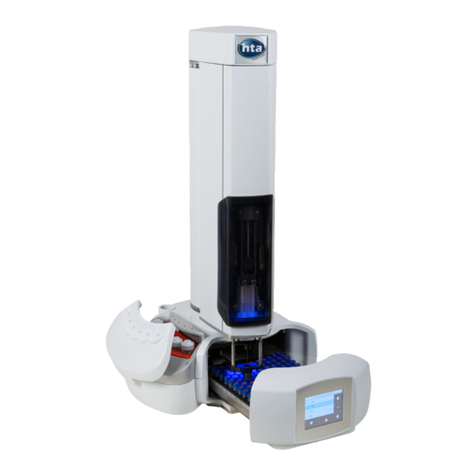
HT2000H_en_n.doc Page 5 of 167
7
HT2000H/HT2000HT OPERATIONS .....................................................................................111
7.1
H
OME SCREEN
..................................................................................................................111
7.1.1
Home screen: Standard User Interface......................................................................................... 111
7.1.2
Home screen: Quick Start User Interface ..................................................................................... 112
7.2
S
INGLE INJECTION
.............................................................................................................112
7.3
A
UTOMATIC RUN
...............................................................................................................113
7.3.1
Interrupting an automatic run....................................................................................................... 114
7.3.2
Immediate Injection....................................................................................................................... 114
7.3.3
Skip Next Vial option..................................................................................................................... 114
7.4
S
YRINGE PURGE
...............................................................................................................115
7.5
L
OAD AND
U
NLOAD
S
AMPLE
V
IAL
.......................................................................................115
7.6
S
ETTINGS
M
ENU
...............................................................................................................115
7.6.1
Change tray/rack type................................................................................................................... 116
7.6.2
Eco Savings ................................................................................................................................... 117
8
TROUBLESHOOTING ...........................................................................................................119
8.1
I
NTRODUCTION
.................................................................................................................119
8.2
S
TART UP ERRORS
............................................................................................................120
8.2.1
Safety lock error............................................................................................................................ 120
8.2.1
Vial locator error ...................................................................................................................... 120
8.2.2
Memory error................................................................................................................................ 120
8.3
M
ETHOD ERRORS
.............................................................................................................121
8.3.1
Fill Volume/Pull Up Strokes settings incompatibility ................................................................... 121
8.3.1
Fill volume/Syringe Pre-Fill settings incompatibility ............................................................... 121
8.4
T
OUCH
S
ENSOR PROBLEMS
...............................................................................................122
8.5
F
ALLING VIALS
..................................................................................................................122
8.6
O
BSTACLE FOUND
.............................................................................................................123
8.7
O
BSTACLE FOUND DURING COVER MOVEMENT
.....................................................................123
8.8
M
ISMATCH ERRORS
...........................................................................................................124
8.8.1
Single injection mismatch error .................................................................................................... 124
8.8.2
Automatic run mismatch errors .................................................................................................... 124
8.9
M
ISSING ERRORS
..............................................................................................................126
8.9.1
Missing: front injector alignment .................................................................................................. 126
8.9.2
Missing: rear injector alignment .................................................................................................. 126
8.9.3
Missing: touch & plunger zero...................................................................................................... 126
8.10
T
IMEOUT ERROR
...............................................................................................................127
8.10.1
Peripheral communication timeout ........................................................................................... 127




























